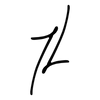The salons didn’t echo—they hissed like the offbeat to a song you can't stop dancing to. Perfumed shadows slipping through velvet drapes, where the air trembled with absinthe, aphorism, and clandestine hunger.
Berlin at the 20th century’s hinge wasn’t just decadent. It was dialectical: an empire and its undoing performed nightly in rooms lacquered with gaslight. And in their corners, myth reentered the bloodstream disguised as men. Not statues, not saints. These were Sascha Schneider’s visions: alabaster and unrepentant, boys in bronze torsion or warriors arrested mid-clinch, their flesh styled like scripture.
Schneider was born Rudolph in 1870. Sculpted by exile and educated in Dresden’s stern academies... he painted like someone smuggling voltage. Wrapping classical allegory around homoerotic fire. Camouflaging danger in toga folds and divine musculature. His brush whispering a language only the outlawed understood: each canvas a sigil, each body a cipher.
Under §175, queerness wasn’t just a secret—it was a sentence. So Schneider encrypted longing in marble gloss and mythic syntax. He didn’t conceal so much as encode. His Symbolism wasn’t aesthetic—it was insurgency. His ephebes glistened not from innocence but from heat: metaphysical, historical, anatomical.
What survives isn't merely a gallery of gods. A codex for those trained to read beneath the law’s line of sight. His were not decorative figures. They were liturgies.
Key Takeaways
- This isn’t art history—it’s a coded survival manual in oil and muscle. You’re stepping into the private architecture of queer resistance disguised as myth. Each artwork a manifesto that outlived censorship, exile, and silence.
- The body becomes the archive. Schneider inscribes a century’s worth of queer longing, ritual, repression, and transcendence into flesh.
- Myth here isn’t fantasy—it’s camouflage. Classical imagery functions not as aesthetic garnish, but as protective drag. The smokescreen that allowed truth to surface beneath the gaze of empire and law.
- Desire is both subject and method. This isn’t a retrospective. It’s a revelation that queer eroticism shaped not only Schneider’s themes, but his entire visual logic—turning aesthetics into insurgency.
- What survives isn’t just Schneider’s work—it’s a philosophy of looking. You’re not just reading about a forgotten artist, you’re inheriting his gaze.
 Classical Bodies, Queer Psyches
Classical Bodies, Queer Psyches
He was born into smoke and contradiction in 1870. A German boy of Danish blood, whose earliest memories unspooled not from lullabies but from alpine stillness and the breathless hush of glaciers. The Swiss Alps gave him clarity; Dresden, where he landed by 1884, gave him chaos.
Myth in the Margins
By adolescence he was already sketching bodies like spells—bronze-age warriors, half-naked ephebes, and gods with the eyes of boys he could never name aloud.
When the Dresden Academy of Art took him in, it was with side-eye and trepidation. By 1893 they’d had enough—his “unruliness” read like revolt. He was dismissed. But exile didn’t crush him—it crowned him.
Into Symbolism’s Core
He opened a studio with a friend and fed himself on disobedience. Max Klinger—mythmaker, rulebreaker—took notice. He ushered Schneider into Symbolism’s feverish core: a world of salons where muscles and metaphors danced under gaslight.
By 1900, Schneider had built his own altar. An atelier in Weimar where he taught figure drawing like it was theology and linework like liturgy.
Flesh as Devotion
This was the era when Schneider stopped hinting and started howling—when the male body stopped being an object of study and became a religion of its own.
A curatorial essay catches him mid-transfiguration: “a prominent position in the nudist culture of the turn of the last century… the male body as motif, manifold, magnetic.”
Allegorical Eroticism
The language isn’t metaphor. Schneider's figures flex with literal devotion—muscles coiled like obsessions, torsos glinting like volcanic glass, each twist of flesh taut with narrative voltage. He flooded his canvases with Arcadian reverie and pagan gym-rats, with reed-bodied epheboi and thunderous Olympians cast as fallen angels. Pandora and Prometheus get co-stars, but they’re eclipsed by the men—men rendered not from memory but from myth seen sideways.
The classical flourishes—togas, laurels, Narcissus in full reflective crisis—aren’t nods to history; they’re masks worn by longing. Schneider unzipped the urn of antiquity and found his own desire folded inside.
His gods were never distant. They reclined on couches that doubled as confessional booths. They flexed. They listened. They loved.
Coded Mythologies
Of course, Germany’s liberal capital was dancing on cracked glass when Schneider laid down his brush. §175 hung in the air like a poisoned whisper, and in response, he laced ritual with subtext and made male beauty an encrypted archive.
His mythology wasn’t distant—it was carnal, coded, and charged. Intimacy wrapped itself in allegory, and still, for those in the know, it glowed like phosphor. Art historian Ty Vanover calls his visual language a “dark and otherworldly environ of the homosexual psyche.”
Awakened Recognition
In Awakened Recognition (1904), two boys lean into each other under tree-filtered dusk. To the casual viewer, it’s just another pastoral. To those whose hearts have lived in shadow, it’s a shivering gospel.
Vanover sees these compositions as psychic overlays—inviting queer viewers to see their own fractured reflections: the extortion letter, the unspoken touch, the grief of being unimagined.
Charcoal Cartographies
These weren’t just paintings of men; they were maps of closets, temples to coded longing. Schneider painted minds as much as bodies. His groves and columns were architecture for secrets—the charcoal architecture of survival.
 Wild Dreams in Parisian Halls
Wild Dreams in Parisian Halls
Schneider’s bare-chested demigods wandered far from Olympus—straight into the dust and gunpowder of Germany’s pulp Westerns.
In 1903, he struck up a creative kinship with Karl May, the novelist behind Winnetou and Old Shatterhand. May wanted drama. Schneider gave him temple-scouts and warrior-angels. His book covers transformed prairies into palaces, painting Apache protagonists with a tenderness that flirted with worship.
Aesthetic Dissonance
One observer noted the mismatch: Schneider’s frontispieces looked less like cowboy kitsch and more like relics from a Parisian salon circa 1899. An outlaw became a sun-dazed Adonis. A gunfight pulsed like a choreographed rite beneath cathedral pines. Even his most innocent imagery—say, a boy riding a bear—carried a curl of erotic danger.
May didn’t flinch. As one magazine recalled, the novelist had “no problem” with Schneider’s queerness. Whether from awe or calculation, May ceded the visual stage to the artist—letting Schneider’s brush smuggle a queer Arcadia into the unlikeliest frontier.
Editorial Censorship
But not all gatekeepers bowed to Schneider’s erotic voltage. Publishers, ever attuned to sales over sublimity, found his Symbolist overtures too unsettling for the mass-market Western.
He once illustrated May’s Orientalisches Tagebuch, infusing it with surreal lushness and veiled heat. The response? “Ambivalent,” he later admitted. Dreamlike compositions were replaced in reprints—sanded down, desaturated, made safe. John Coulthart notes that the edits dimmed the queer pulse that once throbbed beneath the palm trees and pavilions.
Ubiquitous Yet Unnamed
And yet, Schneider’s reach was undeniable. His illustrations were mass-circulated portals to a sensual vocabulary few dared name. A Dresden clerk, a New York salon hostess, a Berlin baron could all flip a page and be met by a figure cast in erotic fog. Schneider’s vision haunted the margins of popular literature like a secret hymn smuggled between the lines—heard but rarely admitted.
Openly Gay in Print
Schneider admitted his sexuality openly and freely. He published in Der Eigene, the world’s first gay periodical: doing something unthinkable in a country where desire could still land you in court.
Adolf Brand’s magazine, launched in 1896, was less a publication than a password—a haven where queer artists whispered across pages in code, verse, and image. And Schneider’s name didn’t hide behind pseudonyms. He printed it plainly, beside poems and inked figures that pulsed with erotic frankness. It was dangerous. It was deliberate. John Coulthart calls this decision “openly gay”; the Schwules Museum goes further, naming him “one of the first obviously and self-confidently ‘gay’ artists.” That clarity mattered.
Desire Without Apology
In a time when even Jacob Epstein hesitated to show his nudes fully nude, Schneider leaned in. His work didn’t just depict male beauty—it lingered. His queerness wasn’t subtext. It was surface. It was signature. He painted desire without apology and hung it in the mythological hallways of fine art.
 The Cult of the Body and the Will to Life
The Cult of the Body and the Will to Life
Form wasn’t just fetish for Schneider—it was faith. He wasn’t content to worship the body; he wanted to transfigure it. At the height of Europe’s turn-of-century obsession with reform—of diet, sun, sweat, spirit—Schneider stood alongside the physical culturists and proto-fascist body visionaries, echoing Nietzsche’s call for the Übermensch, but with more flesh and less sermon.
Founding Kraft-Kunst
In 1920, he co-founded the Kraft Art Institute (Kraft-Kunst) in Dresden: equal parts gymnasium, studio, and occult dojo. There, art and anatomy did push-ups together. Models weren’t just posed—they were trained. Affirmations, physical drills, even hypnosis: Schneider called it “harnessing the power of suggestion,” sculpting not just bodies but belief. “The spirit that builds its own body,” he explained.
From Canvas to Circuitry
Gone were the painted groves and mythic backdrops. In came real barbells, real sweat, and real-time composition. He wasn’t recreating antiquity—he was rehearsing it. In every glistening back muscle, Schneider saw both Adonis and aspiration. He built temples from testosterone. And he called it art.
Hypnosis as Allegory
Schneider didn’t just depict strength; he mythologized it as metamorphosis. In Hypnose (1904), a young man, chiseled and calm, gently shuts the eyes of a swan-winged woman. The gesture is soft, but the transfer implied is monumental—power flowing not from dominance, but from conviction.
Later manuals on autosuggestion reproduced the image without irony.
The Body as Belief System
Schneider’s figures weren’t symbols; they were circuits. Each flexed body conducted belief. The gymnasium, to him, wasn’t a training ground—it was a sanctuary where repetition became ritual and sweat rewrote the soul.
He shared terrain with the Lebensreform devotees—those heliotropic, flaxseed-chewing crusaders who thought breathing exercises could redeem the species. But Schneider added something rarer: erotic sincerity.
Queer Utopianism
As Ty Vanover notes, his athletic nudes weren’t just beautiful—they aligned personal yearning with the utopian visions of health culture. In Schneider’s cosmos, musculature wasn't for performance. It was for communion. His art imagined bodies not as destinations, but as vehicles—toward transcendence, toward queerness unhidden, toward some brighter and less policed tomorrow.
Gymnasium as Temple
Rudolf Steiner may have conjured etheric planes and astral bodies, but Schneider grounded transcendence in pectorals and scapulae. His work was a séance held in a squat rack. Pagan rites, tantric memory, theosophical swirl—they pass through his compositions like incense through a gymnasium. The bodybuilder’s gaze frames it all: not the body as machine, but as mythic transmitter.
Between Asceticism and Lust
What emerges is a tension between worship and discipline. His paintings meditate and tremble. They instruct and seduce. Each one flutters at the edge of asceticism and lust. It’s not just muscle—it’s doctrine.
The figures oscillate: half fugue, half anatomical flashcard. And beneath their wax-polished skin, there’s a charge, a rebellion staged not in manifestos but in deltoids.
Sacramental Eroticism
Schneider wasn’t painting sex or fitness. He was painting sacraments—queerness as liturgy. The revolution here is tender and tensile: a world where the body is fully seen, fully claimed, and not punished for what it wants to say.
 Exile, Return, and Legacy
Exile, Return, and Legacy
Schneider’s mythologies were built from muscle, but his life was shaped by threat.
In 1908, desire collided with danger. He’d taken Hellmuth Jahn—a younger artist, lover, and eventual Judas—into his Weimar world. When Jahn threatened to expose him, Schneider didn’t wait for the machinery of §175 to grind forward. He vanished. Left Saxony. Crossed the Alps. Settled in Italy, where the sun was easier on skin and the law less interested in whom it touched. Exhibition notes record the episode as a “blackmail attempt,” but that phrase barely holds the weight: this was exile, not escape.
The Italian Interlude
In Rome and Florence, he carved out a clandestine studio life, sketching in olive groves, trading Arcadian backdrops for lived solitude. His palette dimmed—twilight blues, ruin-stone greys. The grandeur softened, the figures more contemplative. These weren’t just new works. They were whispers from a different hemisphere of queer survival. A different grammar of visibility. Far from Weimar, Schneider learned to paint without looking over his shoulder—but he never stopped listening for footsteps.
Return in Shadow
By 1914, the war dragged Schneider back across borders like an undertow. He returned incognito, slipping into a fractured Germany that looked nothing like the one he'd fled. Post-Armistice, he made his way back to Dresden—not as the flamboyant Symbolist of yesteryear, but as a kind of mythic uncle, a grizzled priest of a vanishing cult.
A Temple Reborn
In 1920, he reestablished the Kraft Art Institute, this time not as an experimental playground, but as a sanctuary for younger artists eager to train under his autosuggestive gospel. Exhibitions were rare, and when he did surface in Vienna or Berlin, it was less for acclaim than for provocation. He became his own monument.
A catalogue from decades later frames him plainly: “a document of an early ‘gay’ art concept,” and “one of the first obviously and self-confidently ‘gay’ artists.” That phrasing feels belated, but earned.
Art and Affection as Kin
By the mid-1920s, he’d begun telling friends what he’d always shown in pigment: that art and affection weren’t separate forces. They rhymed. They conspired. They shook hands in secret.
A Quiet Ending
Schneider died in 1927, tucked in the anonymity of a seaside resort, undone by diabetes at fifty-six. There were no parades, no final exhibitions, no salutes to his altar of flesh. His afterimage didn’t fade—it was extinguished. The rise of the Third Reich swept away memory with ash and fear. No postwar museum bore his name in neon.
Fragments and Preservation
His legacy was scattered: sketches in drawers, paintings gone missing in bombed-out attics, ideas half-remembered in rumors and footnotes. And yet, some fragments dodged the fire. A few hundred works survived in the hands of those who knew what they were looking at.
Hans-Gerd Röder, a collector with monk-like patience, preserved many of them. In 2013, the Leslie Lohman Museum threw open the doors Schneider had long been locked behind and gave him back to the world. Now, Sascha Schneider is no longer just a marginal curiosity or symbolist footnote.
Queer Reclamation
Queer historians and curators claim him outright—as kin, as prophet, as the brush-wielding grandfather of body-liberation and gay visibility. His vision of male beauty wasn’t premonition—it was provocation. He painted musculature before it was politically safe. He gave form to bodies that culture tried to erase or shame. His sensual algebra—the mythic poses, the erotic mirroring, the fin-de-siècle fugue of pose and presence—became a pre-language for artists who came later.
Mirror Logic
Schneider’s portfolio is now a breeding ground for footnotes and fever dreams: some see Winckelmann’s ghost standing beside him; others place him squarely in Weimar’s decadent bloom; still others call him a proto–drag king, seducing history with costume, posture, and performance.
But perhaps Schneider’s most enduring metaphor is the mirror. Or better yet, two mirrors—angled just so—reflecting myth into memory and back again. His bodies were both homage and cry: not gods, not monsters, but men, seen and desired.
A Fresco Reawakened
Today, his work isn’t just art—it’s excavation. Every exhibit feels like a dig into buried frescoes of gay longing. Each brushstroke, a secret survived. His legacy isn’t a pedestal or plinth—it’s a refuge. A mythscape carved for the boy who searched for himself in museum glass and finally saw not danger or erasure, but a body he could recognize.
Reading List
- “Artist Spotlight: Sascha Schneider.” Advocate, September 14, 2013.
- “Der Eigene.” Wikipedia.
- “Hypnosis by Sascha Schneider.” Obelisk Art History.
- Katz, Jonathan David. “‘I go my own way…’: Sascha Schneider – Art and Homoeroticism ca. 1900.” Exhibition text, Schwules Museum, Berlin, 2014.
- Katz, Jonathan David. “Nude in Public: Sascha Schneider: Homoeroticism and the Male Form circa 1900.” Leslie-Lohman Museum of Gay and Lesbian Art, September 20 – December 8, 2013.
- “Kraft-Kunst-Institut.” Karl-May-Wiki.
- “Ich gehe meine eigenen Wege… Sascha Schneider – Kunst und Homoerotik um 1900.” Schwules Museum, March 28 – June 30, 2014.
- “Modernity and the Body: Sascha Schneider’s Bodybuilders.” Artlark, September 21, 2022.
- “Sascha Schneider.” Deutsche Digitale Bibliothek.
- “Sascha Schneider.” Obelisk Art History.
- “Sascha Schneider.” Twisted Spoon Press.
- “Sascha Schneider.” Wikipedia.
- “Sascha Schneider.” WikiArt.
- “Sascha Schneider’s Homoerotically Inspired Art.” Gay News, 2013.
- Starck, Christiane. “Von Marmor zu Muskeln: Sascha Schneider und das Kraft-Kunst-Institut in Dresden.” AugenBlick, no. 53 (2012): 6–16.
- Vanover, Ty. “Sex, Sign, Subversion: Symbolist Art and Male Homosexuality in 19th-Century Europe.” Arts 13, no. 3 (2024): 103.









